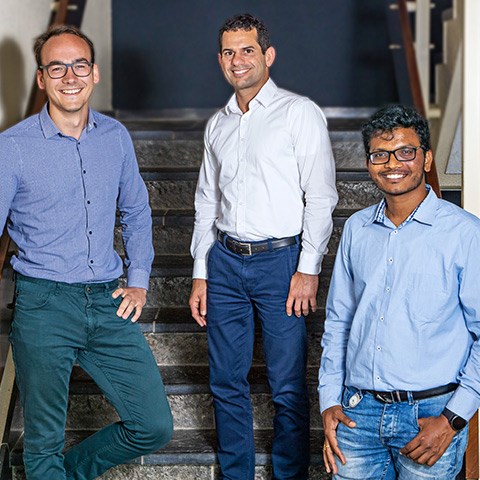Molten Salt Irradiation SALIENT-01
SALIENT-01: research programme Molten Salt
15 July 2020
First irradiation experiment with molten salt nuclear fuel since the 60’s.
Assessment of stability and distribution of fission products in molten salt
Development of new irradiation experiment possibilities to attend the market.
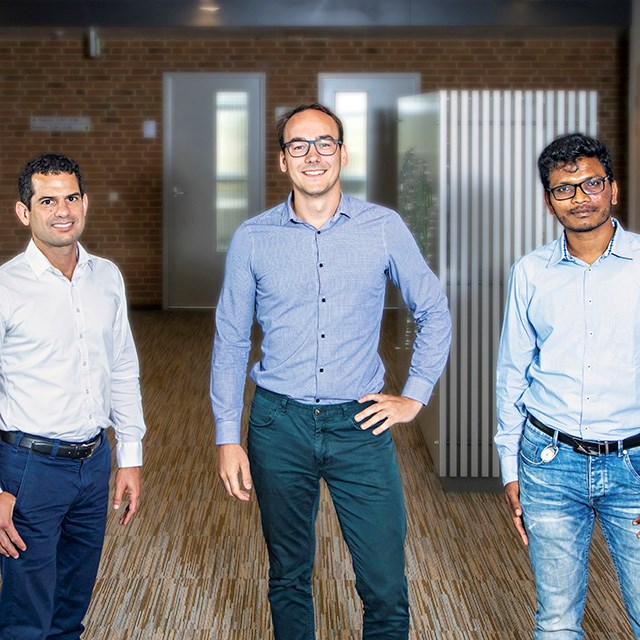
Molten Salt Innovation Team
- Multidisciplinairy team: engineering, chemistry-physics, computer simulations, project management, quality, safety
- Fruitfull cooperation with partner Joint Research Center in Karlsruhe
- Know-how and ‘Lessons learnt’ directly transferable to new experiments
About SALIENT-01
In 2015 NRG started together with the European Joint Research Centre (JRC) in Karlsruhe a series of nuclear fuel irradiation experiments to support the development of Molten Salt Reactor technology. Such experiments were not performed since the 60’s, when a large scale investigation was carried out by the Oak Ridge National Lab. The first experiment in the series named SALIENT-01 (SALt Irradiation ExperimeNT) was irradiated in Petten’s High Flux Reactor between August 2017 and August 2019. The experiment was cooled down for one month before transport to the Hot Cell Lab for examination. SALIENT-01 focuses on the interaction between nuclear fuel and graphite, as well as on the spread of fission products within the reactor. Overall, the experiment was meant to develop ‘hands-on’ experience with nuclear fuel salt.
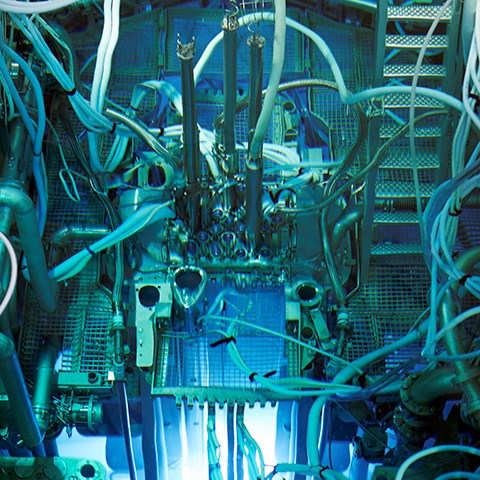
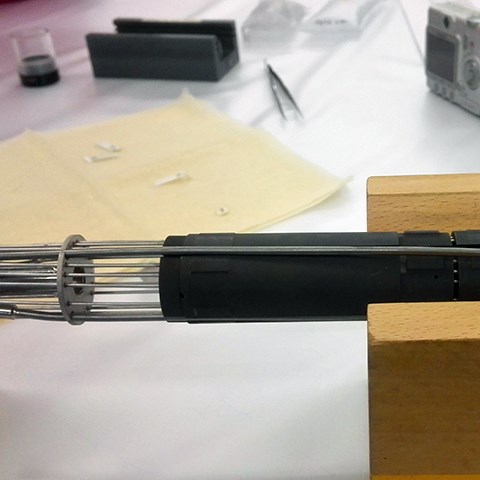
Irradiation of SALIENT-01
SALIENT-01 consists of a hermetically closed sample compartment of 60 cm length and 3 cm diameter, containing 4 small nuclear fuel salt samples (each one smaller than 1.5 cm3) in open graphite crucibles. These fuel salt samples consist of mixtures of LiF and ThF4 having a melting temperature of 568 oC.
The samples were irradiated for 18 cycles of 30 days in the HFR under a strong neutron field at temperatures of around 600 oC. During irradiation, 232Th captures a neutron and transmutes into 233U (via 233Pa) , which is fissionable. The fission of 233U produces energy in the salt samples in the form of heat. At the same time the fission process contaminates the salt due to the formation of radioactive fission products.
SALIENT-01: The first irradiation of this kind since the 1960s. It’s a crucial step in the development of molten salt reactor technology in a safe and feasible manner. - Uazir de Oliveira - Program Manager MSR
Hot Cell Labs
In the Hot Cell Labs, measurements and inspections are performed to understand the transformations of the samples occurring inside the reactor core. Some important questions to be answered are:
- Are fission product compounds released from the salt, and if so, where have they relocated to?
- Some fission product compounds form small metal particles. What is their typical size? Do these metal particles attach preferentially to metal or to graphite surfaces?
- Is there any noticeable chemical reaction between salt and graphite?
The main techniques that will be used are analysis of gamma radiation generated by the samples, chemical composition of plenum gas and (electron) microscopy of salt and graphite particles.
Samples of irradiated salt will also be sent back to JRC Karlsruhe. In Karlsruhe, the temperature will be increased slowly until the samples are completely vaporized. The evaporation temperature of each salt component is then characterized. The obtained data can be used to understand the source term for radioactivity in safety assessment studies.
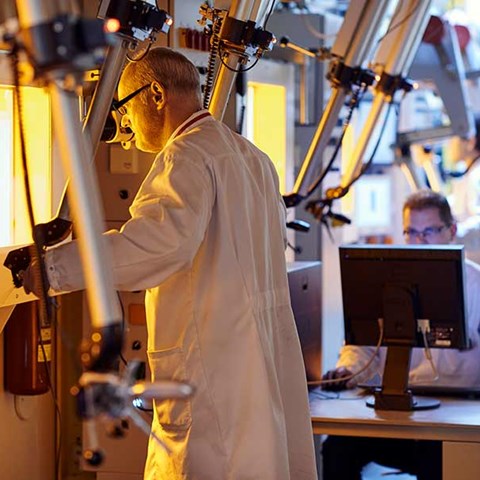
More information?
More information about SALIENT-01? We are here to help you. For more information please email us.
We're happy to tell you more
